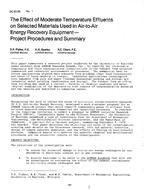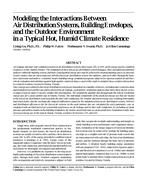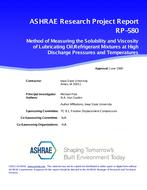A ground-coil heat pump system is defined as a heat pump in which the outdoor or evaporator coil is placed directly in the ground or exchanges heat with the ground through a secondary fluid (usually water or antifreeze solution), which is circulated through the ground in a closed loop. Ground-coil systems present a more challenging design problem than either air-source or well-water systems. For instance, the performance of the outdoor coil on an air-source system can be readily predicted once the outdoor air temperature and humidity are known. Well-water system performance can generally be determined at the time of drilling with established well-testing techniques. However, the performance of ground-coil systems is highly dependent on ground heat-transfer characteristics. Soil type (clay, silt, sand, etc.) and moisture content can cause ground thermal conductivities to vary by orders of magnitude from one part of the country to another, from one lot to another within the same town, or from one point in time to another for the same lot. Thus, there are many challenges and uncertainties in designing arid installing ground-coil heat pumps.
This project was undertaken with the objective of reviewing historical and current methods for designing ground-coil heat pumps. The efforts concentrated on European and North American experience. The following discussion presents the historical background followed by a description of basic design configurations, operating experience, and some specific design methods that have been developed or are under development.
Citation: Symposium, ASHRAE Transactions, 1983, vol. 89, pt. 2B, Washington, D.C.
Product Details
- Published:
- 1983
- Number of Pages:
- 25
- File Size:
- 1 file , 1.9 MB
- Product Code(s):
- D-DC-83-08-4


